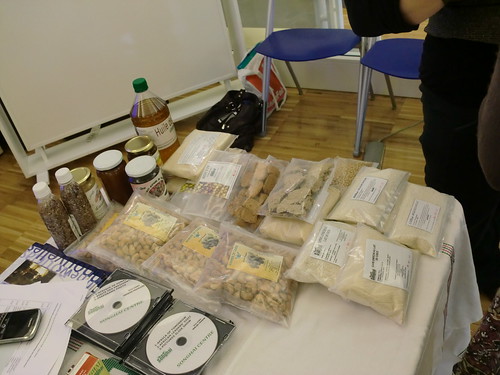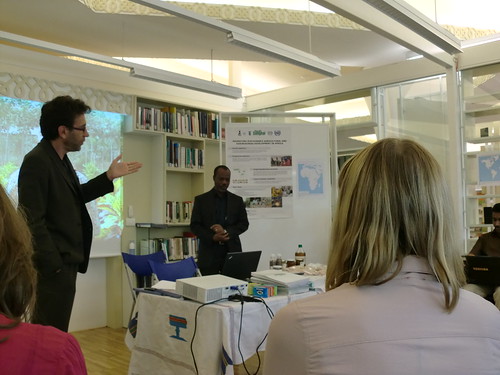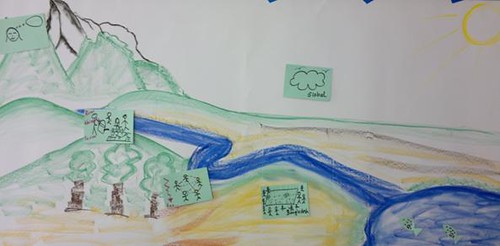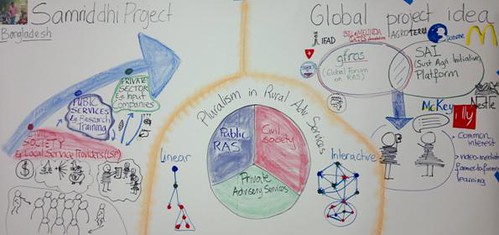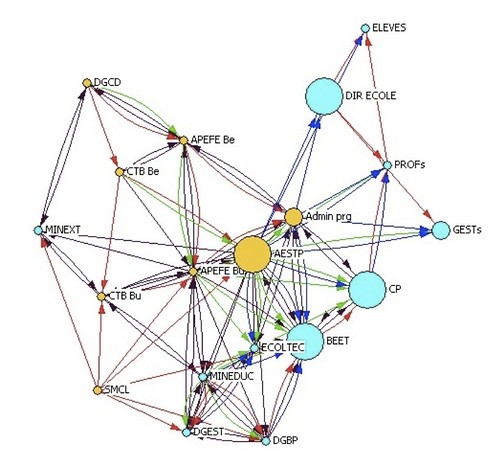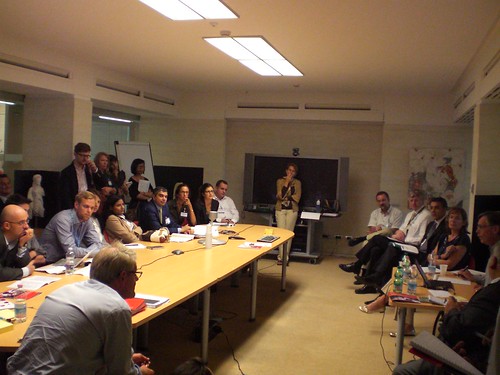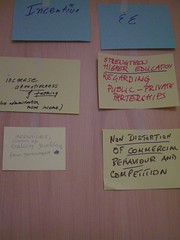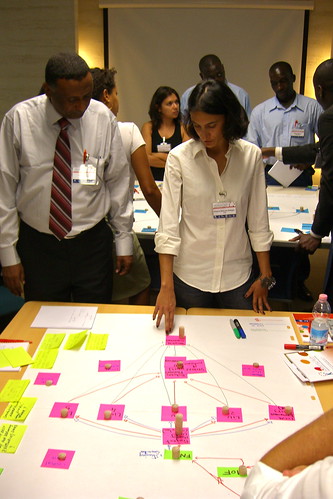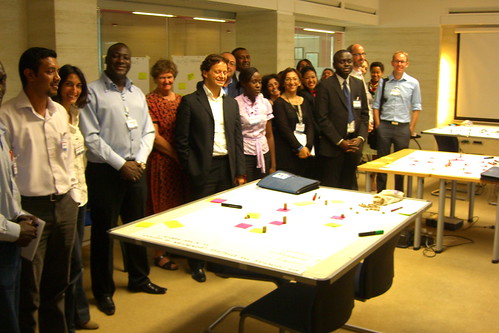Post by Johannes Schunter (UNDP)
When walking through the IFAD corridors this warm Italian September week
one cannot help but be amazed by the buzzing, vibrant energy that is
felt in every part of the building. People chat in corners, engage in up
to 15 parallel group sessions, share their thoughts with someone with a
video camera or sit in the hallway with their laptop on their lap,
communicating one of their many impressions through email, Twitter or a
blog. Over 600 participants, 160 projects, 200+ scheduled group or
plenary sessions, and one is left with an immediate question: How on
earth did they pull this off? After all, there is no professional event
management company involved here that pulls the strings. This event is
done by the sponsoring organizations themselves, with a surprisingly low
budget and mostly with staff who – if they are not helping plan and
implement knowledge fairs – have other jobs to do.
I talked to some of the organizers to get a small glimpse of the machinery that made this event happen behind the scenes.
Planning
for this ShareFair started already in January 2011, with a one-day
facilitated brainstorming workshop where the Rome-based stakeholders (
Bioversity International, CGIAR ICT-KM programme, FAO, IFAD and WFP) got
together to determine the general direction and approach they wanted to
take with this event, building on the first event that took place at
FAO in 2009. After that a Steering Committee was established in
February to plan the event.
As there is no general existing
budget for Rome ShareFairs, the team members from the different host
organizations had to raise funds for the significant logistical and
programmatic requirements (which include necessities such as security,
ambulance, infrastructure and communication expenses) as well as to fund
travel expenses for proposals from participants who otherwise could not
come to the fair and share their learnings. Yet, I was surprised to
learn that this entire event is realized with notably less than $200,000
(actual and in-kind) accumulated resources overall.
Talking
about proposals: roughly 300 proposals were submitted after the Steering
Committee publicly announced the ShareFair through their website
http://www.sharefair.net
in May 2011. The submissions were reviewed and filtered down to about
160, the maximum capacity of content sessions that the IFAD building can
accommodate during the three main days of the fair with up to 15
parallel sessions at a given time slot.
These
sessions, however, are rarely self runners. If the thematic expert is
not by chance also a communication professional, a facilitator is needed
to help the presenter avoiding tiring PowerPoint slides and instead
turn the presentation into an engaging, participatory learning session
using knowledge sharing (
http://www.kstoolkit.org/KS+Methods)
approaches. But where to get those versed facilitators from? Luckily,
Knowledge Management staff in Rome are well connected with the Knowledge
Management for Development Network (KM4Dev), a community of KM
practitioners working in development. Additionally, a call was placed
also within each of the participating organizations for facilitators. By
calling on about 50+ volunteer facilitators, the ShareFair organizers
were able to provide professional facilitation for almost all project
presentations, drawing on a range of creative and participatory
facilitation methodologies which were introduced in a pre-conference
training day for participants interested in these tools.
The
training sessions of this so-called “Training and Learning Day”
included not only facilitation techniques, but also introductory
sessions into a range of social media tools for knowledge exchange and
communication, such as Twitter, Facebook, Photos, Blogs or Podcasts.
That those sessions were not just theoretical exercises was demonstrated
during the entire week by the social reporting team, a group of about
30+ social media enthusiasts who committed to report live from event
sessions and interactions in between sessions through the full range of
social media tools. This way, the immediate audience of a few hundred
on-site participants could be extended to many thousands of interested
practitioners that followed the event online, by reading blogs, viewing
video interviews or responding to tweets posted during the event.
Finally,
as a participant of the Fair, besides noticing some of the more visible
faces of the fair that give announcements and introduce sessions, you
will most likely run into one of the many volunteers who are supporting
the logistics behind the scene at any given moment: as registration desk
volunteers, as information focal points and helpful guides on each
floor, behind the technology that provides meeting room infrastructure,
WLAN access and live webcast, or as runners who help fixing the many
little and bigger emergencies that we mostly don’t even notice as
participants.
So again, what does it take to make such a ShareFair
happen? It takes all those people, seen and unseen, and I think they
deserve a collective tipping of hats for the astounding work they do. Or
you just walk up to the next one you see and give that person a ‘thank
you’. And if you bring them a cup of coffee they might even reward you
with more interesting details on life behind the scenes of the
ShareFair!
 "The livelihood of a vast majority of people in East Africa is highly dependent on income from livestock and livestock products. Therefore, the development of reliable and timely livestock market information is vital for the development of the countries in the region and provides a basis for livestock producers and traders to make informed marketing decisions"
"The livelihood of a vast majority of people in East Africa is highly dependent on income from livestock and livestock products. Therefore, the development of reliable and timely livestock market information is vital for the development of the countries in the region and provides a basis for livestock producers and traders to make informed marketing decisions" During today's session, experiences, lessons and challenges were discussed, in reference to the institutionalization of livestock market information and livestock early warning system into governments' market information and early warning system.
During today's session, experiences, lessons and challenges were discussed, in reference to the institutionalization of livestock market information and livestock early warning system into governments' market information and early warning system.

